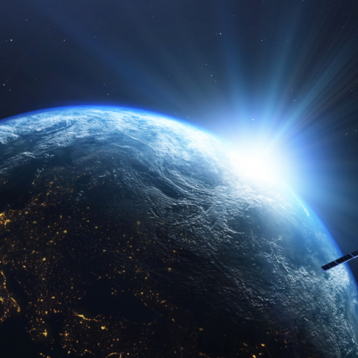|
Launched in November 2009 from the Plesetsk Cosmodrome in northern Russia as part of the ESA’s Living Planet program, SMOS is the first satellite designed to measure the moisture of soil and the saltiness of the oceans from space. The images are taken by a new interferometric radiometer using L-band microwave radiation around the frequency of 1.4 Gigahertz. The new instrument, called the Microwave Imaging Radiometer using Aperture Synthesis or MIRAS, consists of 69 receivers mounted on three arms. To operate properly, the receivers must be kept at 22 degrees Celsius. SMOS incorporates heaters on each arm to maintain the necessary temperature.
SMOS actually captures a variable called brightness temperature which measures the radiation emitted from the surface of the Earth. MIRAS captures the brightness temperature every 1.2 seconds. After significant processing both to improve the quality of the images and to transform the radiation level data, these images yield specific information on ocean salinity and soil moisture levels.
Both soil moisture levels and ocean salinity are important aspects of the global water cycle but they haven’t been the focus of significant direct study on Earth. Only a tiny portion of the oceans are sampled with any regularity and soil measurements are even less common. Accurate data could help model climate change, ocean circulation, and other environmental variables.
A commissioning phase focused on calibrating this initial data and ensuring baseline measurements for
|
future comparison is scheduled through the end of April 2010 at which point SMOS will move into its primary mission of monitoring the soil moisture and ocean salinity over time.
TFOT has previously reported on other ESA missions including an overview of the Herschel Space Observatory designed to observe far infrared and submillimeter wavelengths, the first images returned from the Herschel Space Observatory, the Herschel Space Observatory’s search for the source of the Cosmic Microwave Background (CMB), and the launch of the Gravity Field and Steady State Ocean Circulation Explorer (GOCE) that’s also part of the Living Planet program.
Read more about the SMOS satellite and the MIRAS instrument at the official ESA SMOS site. Additional information about the initial SMOS images can be found in this ESA press release.












